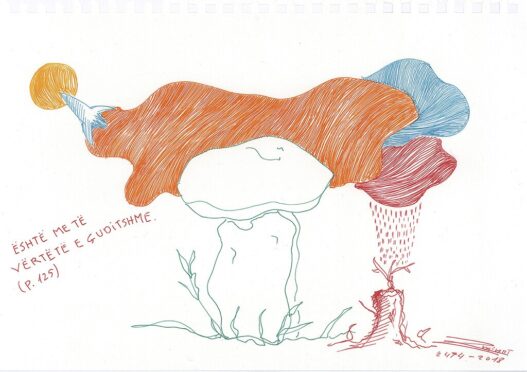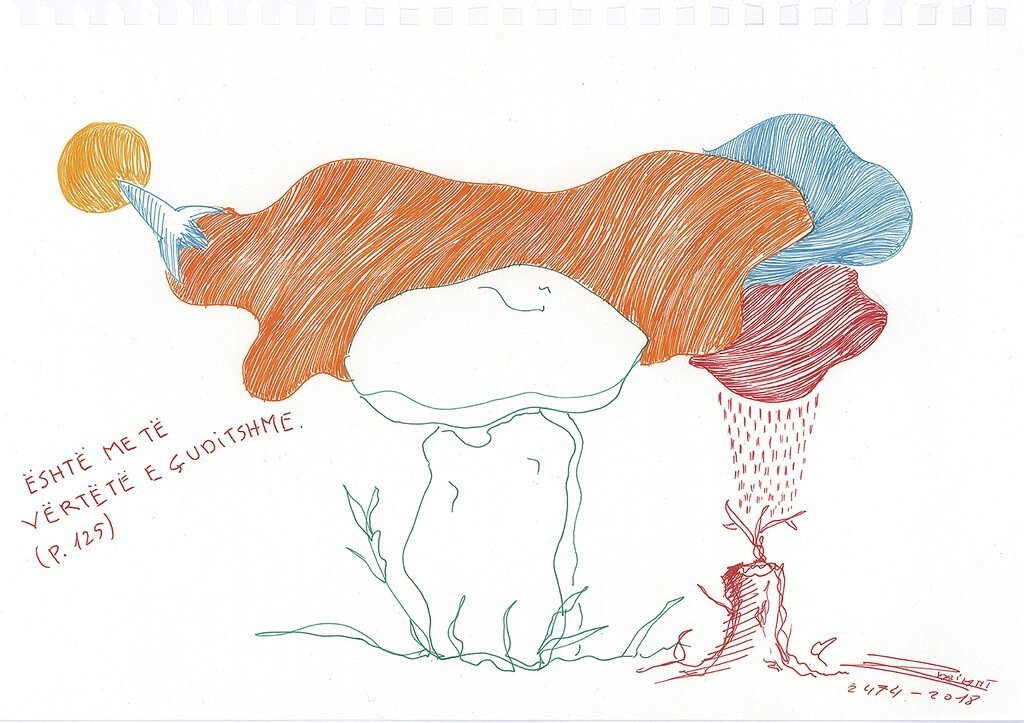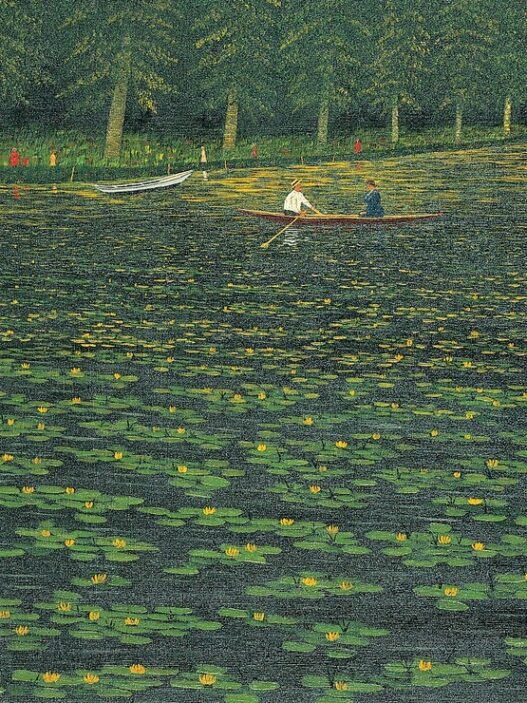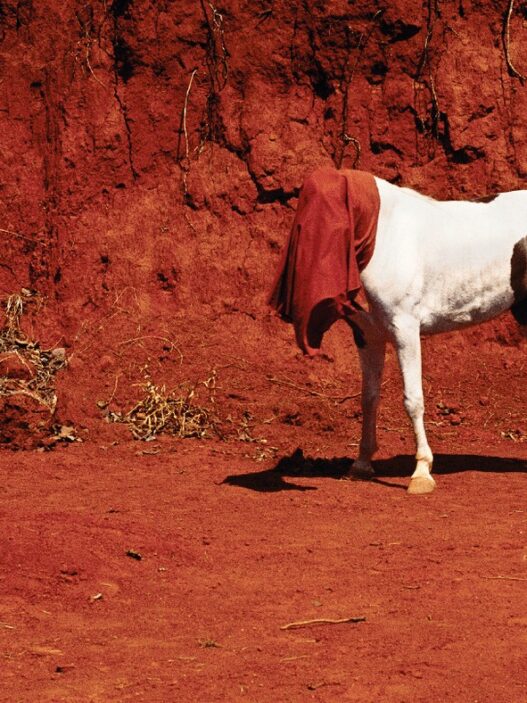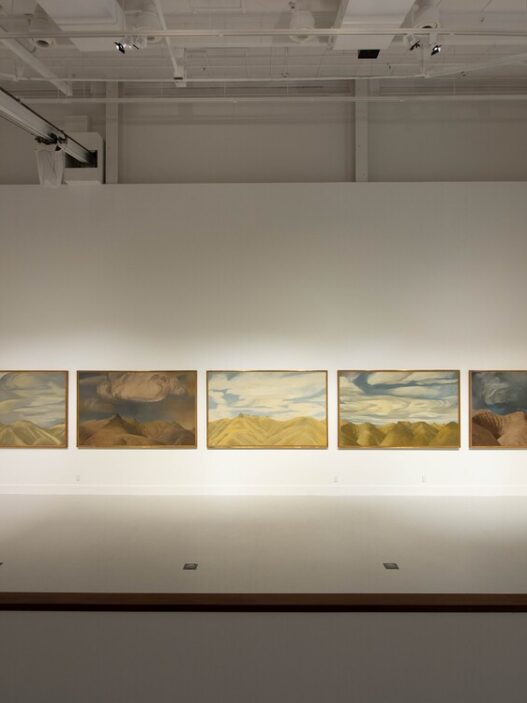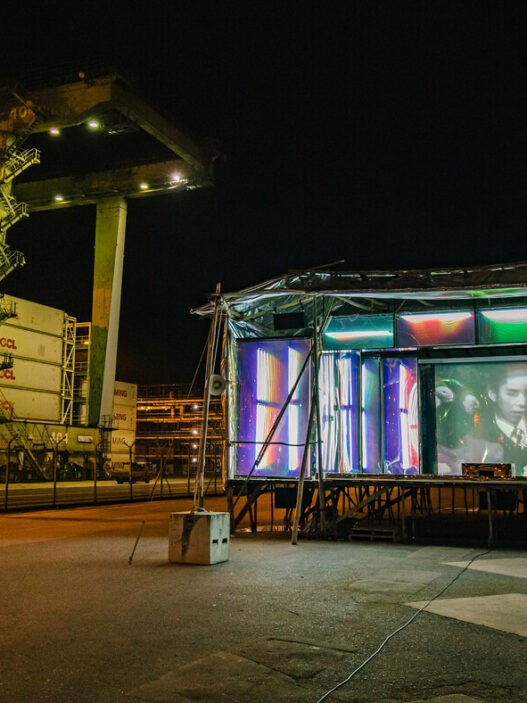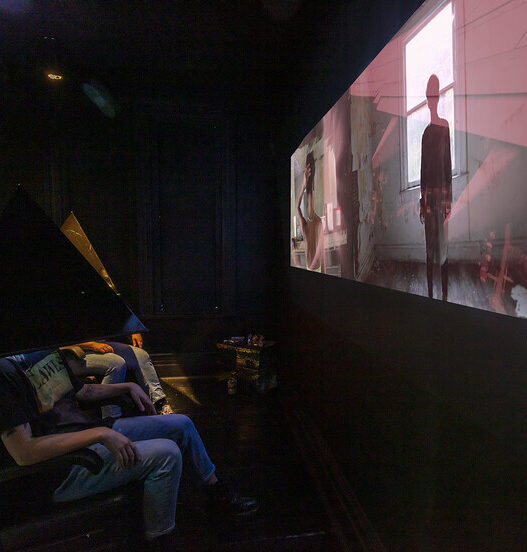August 4–September 4, 2022
Official opening: August 4, 8:30–10pm
Press launch: August 4, 8:30pm
Curator: Ana Frangovska
The exhibition The Trilogy: Beneath a surface, there’s merely another surface is a multidisciplinary project by well-known Albanian artist Driant Zeneli that comprises of three videos (installations), drawings, pre-made products, and installations. The mineral chrome is what unites all of the characters in the movies. Zeneli explores the notion of utopias and dystopias from the past, as well as from the present, in one of the video works titled It Would Not Be Possible to Leave Planet Earth Unless Gravity Existed. He speaks about the idealism and the promise for a better future in the old communist system versus the obvious failures for reaching it, opposing it to the ideas, wishes, and failures of a single man, Mario, a contemporary of the artist, who wants to fulfill his desires and fly in outer space. The location is an old factory—Metallurgical Complex “Steel of the Party” in Elbasan, built-in 1962. It was a relic and a sign of political comeback following a stand-off with the Soviet Union—of the newly minted alliance between the Communist Party of China and the Party of Labour of Albania.
In all of Zeneli’s films, abandoned architecture has always served as the setting for the action. In the second video, And Then I Found Some Meteorites In My Room, the artist explores the notion of infinity and envisioning a better future through the two main characters, Bujar and Flora (chrome collectors who are actually a factory nurse and a DJ), while deftly utilizing the very pessimistic nature of modern society.Trans-history, politics, the ghosts of the past, critique, science fiction, the future, and dreams are just a few of the concepts that are included in the third part of the trilogy, Maybe the cosmos is not so amazing. The action takes place in the Bulqize mine, which is located in central Albania, and the artist is speaking about chrome mining, one of his country’s most significant industrial and commercial activity.In this scene, Zeneli invents a fantastic story about the entire process of this activity as seen through the lens of a cosmic capsule that a group of teenagers discovered, while in a parallel scene, the voices of Flora and Bujar, the characters from the previous movie, are heard again, sounding like a series of contrasting narrations stretching into infinity. Following the moving picture installations are visual descriptors such as drawings, a literary voyage from Hysenbegas’ 1983 book (Towards Eridan’s Epsilos), robotic chrome hands, a piece of chrome mineral, etc.
The foundation of Zeneli’s research is the redefining of the concepts of failure, utopia, and dream as components that open up potential alternatives. In his movies, history and power are woven together with personal stories to create dystopias that go against the laws of nature. Unplanned interactions and a connection to a location’s architectural history are essential to the creative process.
Zeneli shapes space and time with the help of his films. The performances take the form of interactive interventions in which the artist and the audience co-create the meaning of the piece. In an ongoing effort to distance himself from the ground and experiment with his own boundaries, the concept of gravity reverberates across every artistic work, whether it be films, drawings, or occurrences.
Driant Zeneli (1983, Shkoder, Albania)
In 2019 he represented the Albanian Pavilion at the 58th International Venice Biennale.
Main exhibitions: Manifesta Biennial 14, Pristina (2022); Teatrino Palazzo Grassi, Venice, (2021); 39th EVA International Biennial, Limerick (2020); National Gallery of Republic of Kosovo (2019); Sharjah Art Foundation, Film Platform, (2019); Latvian Centre for Contemporary Art, Riga (2019); Autostrada Biennale, Prizren, of Republic of Kosovo (2019); GAMEC, Bergamo, (2019); Mostyn Gallery, Wales, UK (2017); MuCEM, Marseille, (2016); Centre Pompidou, Paris (2016); GAM, Turin (2013); ZKM, Karlsruhe (2012); MUSAC, Castilla León. Spain, (2012); National Gallery of Tirana, (2008).
National Gallery of North Macedonia
Chifte Hamam, Bitpazarska bb
1000 Skopje
North Macedonia









